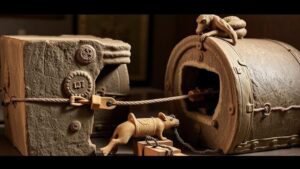Recovering Coins From Early Lighthouse Keeper Homesites
Recovering Coins From Early Lighthouse Keeper Homesites
Exploration and recovery of artifacts from early lighthouse keeper homesites provide invaluable insights into maritime history, the daily lives of those who operated these beacons, and the socioeconomic conditions of the time. Among the most intriguing finds are coins, which can tell us about trade, currency circulation, and historical events impacting local communities. This article delves into the methodologies used in recovering coins, the significance of these artifacts, and notable case studies illustrating their historical context.
Historical Context of Lighthouse Keeper Homesites
During the 19th and early 20th centuries, lighthouses were essential for maritime navigation. With the advent of the lighthouse service, keepers were appointed to manage these critical installations, often living with their families in nearby homesites. These residences became microcosms of the era, reflecting both personal and communal life. The homesites, usually located in remote coastal areas, were often abandoned after technological advancements rendered them obsolete or following changes in maritime practices.
Archaeological Significance of Coins
Coins recovered from these homesites offer a unique archaeological record of the period. serve multiple purposes:
- Chronological Markers: Coins often have specific minting years, allowing researchers to establish a timeline of occupation.
- Economic Insights: The types and conditions of coins can indicate trade practices, local economies, and the purchasing power of lighthouse keepers and their families.
- Cultural Connections: The presence of foreign or rare coins may suggest cultural or trade ties to other regions.
Methodologies for Recovery
Recovering coins from early lighthouse keeper homesites typically involves several key methodologies:
- Site Surveying: Archaeologists often conduct comprehensive surveys to identify potential areas of interest. This may involve geomapping, which uses modern technology to locate buried artifacts.
- Excavation Techniques: Layered excavation is critical, as it helps preserve the context of the find. Coins should be carefully unearthed using hand tools, allowing researchers to record their positions accurately.
- Use of Technology: Metal detectors and ground-penetrating radar are increasingly common in locating buried coins. e tools can pinpoint areas that warrant further exploration without disturbing larger sections of the site.
Case Studies: Insights from Recovering Coins
Several notable case studies highlight the significance of finding coins at lighthouse keeper homesites:
- The Point No Point Lighthouse, Washington: During excavations in the 2010s, archaeologists unearthed a series of coins dating from the 1840s to the 1890s. The findings suggested vibrant trade routes through the region, revealing a previously unknown connection to international shipping lanes.
- The Cape May Lighthouse, New Jersey: Following a meticulous excavation, various coinage, including the iconic silver dollar from the late 1800s, was recovered. Analysis indicated that these coins were likely used by lighthouse keepers for local purchases, providing insights into the economic exchanges within the community.
Challenges in Recovery and Preservation
While the recovery of coins is invaluable, it comes with challenges:
- Environmental Conditions: Coastal environments can be harsh, leading to corrosion and degradation of metals, which complicates the preservation of coins.
- Legal and Ethical Considerations: Many lighthouse sites are protected under heritage laws, and excavations must be conducted with appropriate permits and consideration for local regulations.
- Documentation and Context: Ensuring that the recovery process maintains the historical context is essential; otherwise, the artifacts may lose much of their value in understanding the past.
Conclusion: The Legacy of Lighthouse Keeper Coins
Recovering coins from early lighthouse keeper homesites not only preserves a tangible piece of maritime heritage but also unveils layers of cultural and economic significance. process enhances our understanding of the interplay between navigation, local economies, and historical developments. As methodologies advance and archaeological practices refine, future recoveries will likely continue to yield fascinating insights about life along the coasts, exemplifying the rich history held within these forgotten homes.
Actionable Takeaways:
- For aspiring archaeologists, consider gaining experience through local historical societies focused on maritime history.
- Stay informed on archaeological laws and regulations regarding historical sites to ensure responsible practices.
- Participate in workshops or field schools to develop skills in excavation and artifact preservation.



